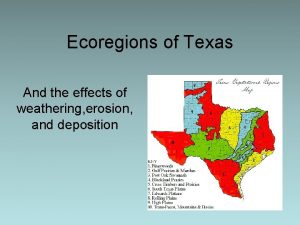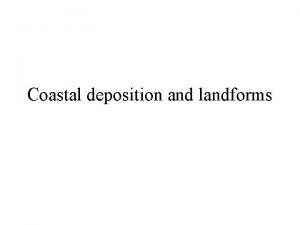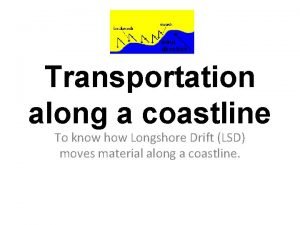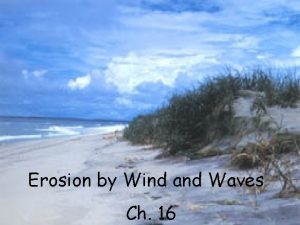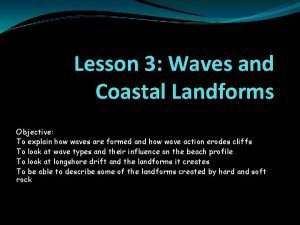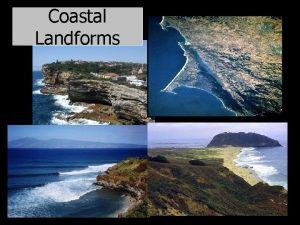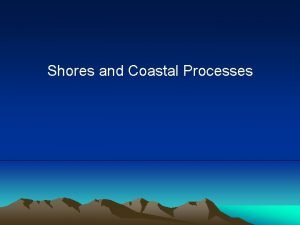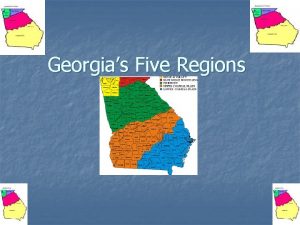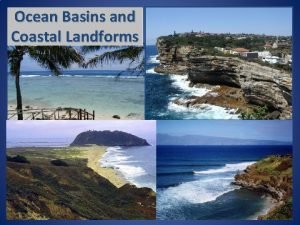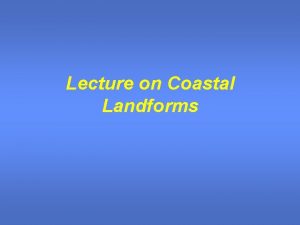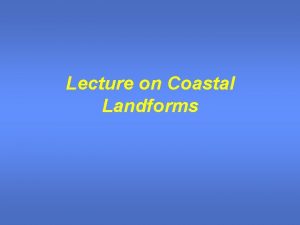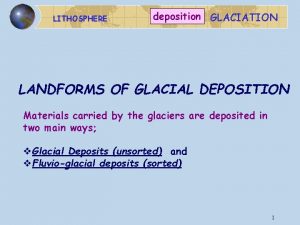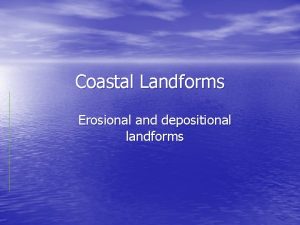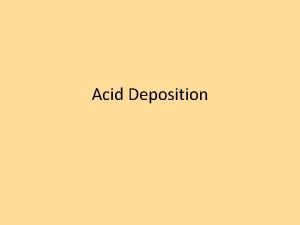Coastal deposition and landforms Aims How is material












- Slides: 12

Coastal deposition and landforms

Aims • How is material transported along a coastline? • How is a coastal spit formed?

Odd one out • For each group of words write down the odd one out and say why it is • Cave Arch Stack Wave • Wave Beach Swash Backwash • Corrosion Corrasion Hydraulic action Erosion • Deposition Transportation Erosion Wave

Coastal processes – transportation

Longshore drift Direction of movement Backwash is always at right angles to the beach swash Backwash This movement of sediment along the coastline is called longshore drift.

Landforms of coastal deposition 1) Beaches 2) Spits

Sand dunes at Studland Beaches form in sheltered environments, such as bays. When the swash is stronger than the backwash, deposition occurs. Sometimes sand from offshore bars can be blown onto the shore by strong winds. In such cases dunes may form.

Spit formation

Case Study: Spurn Head • Spurn Head is a sand shingle spit, which is 5. 5 km long across the Humber Estuary • 1. Accurately describe the location of Spurn Head using the map and atlas to help you. • 2. Explain using your own knowledge and a picture of the coastal spit how it has been formed. Be specific to the location and use geographical terms (Tips: Which way is longshore drift going? What processes form spits? )

Lifeboat and a few buildings including a pay and display car park for tourists There is a road here that leads all the way back to the headland • Spits are constantly changing. What do you think will happen to this spit in a hundred years? Will the buildings still be there? Will the road still be there? Why? What shape will it be? What processes are changing it?

Match the label to the correct landform

How are bars different? • Read page 19 of AQA geography B to discover what a ‘bar’ is. • 1) What is the main difference between a bar and a spit? • 2) What role would a rivers velocity have on the formation of a bar? • 3) Find a picture of a bar and label the main features.
 Weathering in the high plains
Weathering in the high plains Blackland prairie weathering erosion and deposition
Blackland prairie weathering erosion and deposition Coastal deposition
Coastal deposition Recurved spit
Recurved spit Coastal deposition diagram
Coastal deposition diagram Headland landform
Headland landform Emergent vs submergent coastline
Emergent vs submergent coastline Wave refraction
Wave refraction The five regions of georgia
The five regions of georgia Coastal landforms diagram
Coastal landforms diagram Geometrical symbol
Geometrical symbol Examples of non material culture
Examples of non material culture Whats cultural lag
Whats cultural lag

